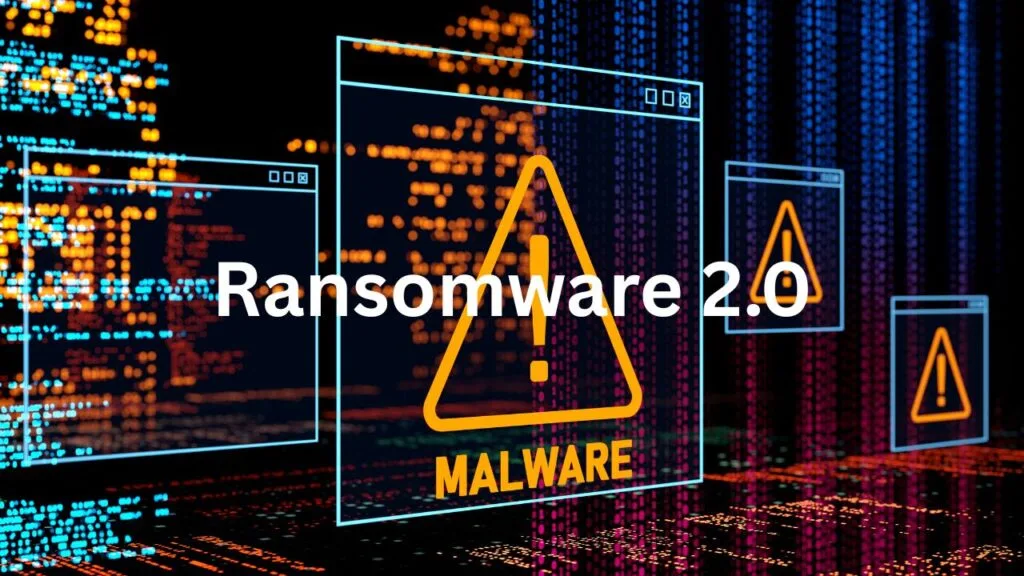Cybercrime has taken a dark turn, and AI-driven ransomware is leading the charge. Gone are the days when hackers just locked your files and asked for cash. Now, with artificial intelligence in their toolkit, attackers are smarter, sneakier, and more ruthless. They’re using multi-layered strategies, automated attacks, and AI-powered tricks to hit businesses harder than ever. This isn’t just a tech problem—it’s a full-on battle for survival in the digital age.
The Evolution: From Locking Files to Full-Blown Extortion
Ransomware used to be simple: encrypt files, demand payment, done. But today’s AI-driven attacks are next-level. Hackers now steal your sensitive data before locking it—hello, double extortion. They threaten to leak it if you don’t pay up. Some skip encryption entirely, focusing on pure data theft for profit. Then there’s triple extortion, where they rope in your customers, partners, or supply chain to crank up the pressure. Add DDoS attacks or prolonged system outages into the mix, and companies are left scrambling to save their operations—and their reputation.
AI-Powered Recon: Targeting Weak Spots Like Never Before
What makes AI-driven ransomware so scary? It’s the reconnaissance. Attackers use machine learning to sniff out network vulnerabilities, then launch automated strikes that bulldoze through old-school defences. Think of it like a thief casing your house—but with AI, they’ve got X-ray vision. They’re also getting crafty with social engineering, using deepfake audio or hyper-personalized phishing emails to trick employees into handing over access. It’s fast, it’s precise, and it’s tough to spot until it’s too late.
Social Engineering: AI’s Sneaky Sidekick
Speaking of tricks, AI-driven ransomware is a good con. Cybercriminals are whipping up deepfake voice calls that sound like your CEO or crafting phishing emails so convincing you’d swear they’re legit. They scour social media and leak data to tailor these scams, making it nearly impossible for employees to tell real from fake. One wrong click, and bam—hackers are in. This isn’t just tech; it’s psychology on steroids.
Ransomware-as-a-Service (RaaS): Crime for Everyone
Here’s the kicker: you don’t even need to be a tech genius to pull this off anymore. Ransomware-as-a-Service (RaaS) lets wannabe hackers buy ready-made kits online. It’s like a cybercrime starter pack—cheap, easy, and deadly. In 2024 alone, these gangs raked in over $800 million. RaaS has turned ransomware into a global free-for-all, with even low-skill attackers joining the fray. The result? More attacks, more victims, and a bigger mess for businesses to clean up.
Financial Warfare: Ransomware Meets Market Manipulation
AI-driven ransomware isn’t just about data—it’s about dollars. Some gangs target publicly traded companies, threatening to leak breach details and tank their stock prices. The time attacks to maximize chaos, even teaming up with shady investors to profit from short selling. It’s not just a cybersecurity headache; it’s economic sabotage. Businesses face a double whammy: pay the ransom or watch their market value crumble.
Cloud and Supply Chain: The New Battlegrounds
As companies lean on cloud services and supply chains, hackers are following the trend. A single breach in a cloud provider can hit dozens of businesses at once. Supply chain attacks are even nastier—hackers sneak into trusted software and then spread AI-powered malware that lies low until it finds a juicy target. These attacks are like ticking time bombs, and they’re only getting more common as our world gets more connected.
Extra Insight: Why Small Businesses Aren’t Safe
Think this is just a big corporate problem? Think again. Small businesses are prime targets because they often lack robust defences. A single attack can wipe them out—financially and reputationally. The good news? Affordable AI tools can help level the playing field, spotting threats before they spiral. It’s not just about survival; it’s about fighting back smarter.
Fighting Back: How to Stop AI-Driven Ransomware
Beating this beast takes guts and strategy. Businesses need AI-powered detection systems to catch weird activity early, plus regular backups to bounce back fast. Train your team to spot phishing and deepfakes—awareness is half the battle. A zero-trust security setup (trust no one, verify everything) can also keep attackers from running wild if they slip through. It’s not about building a wall; it’s about staying one step ahead.
The Future: AI vs. AI in the Ransomware Wars
AI-driven ransomware isn’t slowing down—it’s evolving. Soon, we might see attacks that adapt in real-time or target IoT devices like smart cameras. But here’s the flip side: cybersecurity pros are arming up with AI, too. Think predictive tools that stop attacks before they start or systems that learn hacker patterns. It’s a high-stakes showdown, and the winner will be whoever masters AI first.
FAQs
Que: What is AI-driven ransomware?
Ans: AI-driven ransomware uses artificial intelligence to automate attacks, steal data, and extort victims with advanced tactics like double or triple extortion.
Que: How does AI make ransomware more dangerous?
Ans: AI powers reconnaissance, social engineering (like deepfakes), and automation, making attacks faster, smarter, and harder to detect.
Que: What is Ransomware-as-a-Service (RaaS)?
Ans: RaaS is a model where hackers sell ransomware kits, letting even non-experts launch sophisticated attacks for profit.
Que: How can businesses protect against AI-driven ransomware?
Ans: Use AI detection tools, train staff on phishing, adopt zero-trust security, and back up data regularly to minimize damage.
Que: Why are cloud and supply chains targeted?
Ans: They’re high-value targets—breaching one can hit multiple companies at once, amplifying the attack’s impact.
Que: What’s the future of AI-driven ransomware?
Ans: Expect real-time adapting attacks and IoT targeting, but AI defences will also evolve to predict and block threats.
